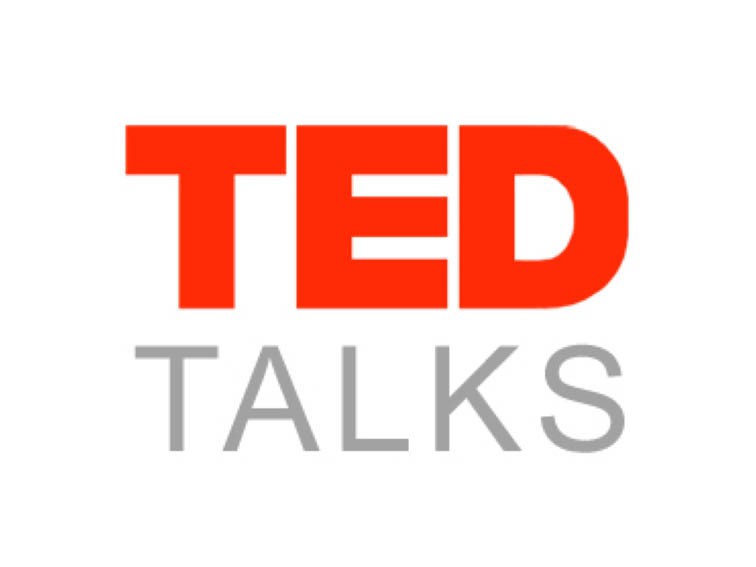
Most leaders can be better.
Many of them actually want to be better too. But even for those visionary leaders, it’s hard to know where to start. There’s a lot of advice out there and quite a bit of it actually conflicts with each other.
Time magazine put together a list of 7 TED Talks to become a better leader. Each TED Talk brings its own message. Here they are:
- Own Your Title – Drew Dudley: “Our society spends a lot of time idolizing people who achieve what very few can, making leadership feel like some far-off, earth-shattering thing that you’ll someday be worthy of. ‘Who am I to lead?’ Who are you not to lead? Your first act as manager should be casting aside any signs of imposter syndrome.”
- Find Your First Follower – Derek Sivers: “‘The first follower is what transforms a lone nut into a leader.’ It only takes one person to support what you’re doing to bring along more followers, so long as you embrace them as equals and let them be partners in your plan.”
- Don’t Favor the All Stars – Margaret Heffernan: ‘Margaret Heffernan cites evolutionary biology, which shows that extreme Darwinian environments full of only star players and top performers actually create such fierce competition that innovation and collaboration can’t happen.”
- Baby Steps Can Be More Effective Than Big Leaps – Matt Cutts: “Look for small opportunities to optimize and little ways to shift existing processes for the better, and the momentum of those wins can help power the changes needed for your larger vision.”
- Ask People Not to Check Their Passions at the Door – Emilie Wapnick: “If you want an innovative team and happy, fulfilled employees, make room for people to pursue their diverse interests and find ways for those out-of-office passions – whether it’s music, architecture, comedy, knitting, kayaking or psychology – to inspire their work inside the office.”
- Don’t Assume Money is the Best Motivator – Dan Pink: “For purely mechanical tasks, sure, people can be motivated to fold neater or sort faster for a cash bonus. But for anything cognitive – tasks that require mental energy like creativity, problem solving and innovation – cash incentives don’t work. They actually make people perform worse.”
- Say No MAS (Mindless Accept Syndrome) to Excessive Meetings – David Grady: “Embrace the ‘tentative’ button, and ask for details about why meetings are being calls, who really needs to be there, and whether the meeting needs to happen at all. With some critical thinking, your team and your department can start to be more mindful about meetings, leaving more time for team bonding, creativity and productivity.”
Click here to see the full article with video snippets from each of the TED Talks.
How do you feel about this advice? Do you have anything you would add to the list? Or take off? Tell us about it in the comments.

Power distance killed Nokia. Not Apple, Microsoft or Android. A recent study investigates just how it happened.
It is almost impossible to believe, but the iPhone isn’t even 10 years old. If you used a cell phone before 2007 you almost certainly owned a Nokia product at some point. They were THE mobile phone company.
But Nokia is gone now. Microsoft bought them in 2013 after the company’s market value dropped by 90% over just six years. Many reasons are given for Nokia’s decline. Most observers blame the iPhone or the fact that Nokia just didn’t have the capacity to keep up.
But those stories don’t add up. Nokia was once worth $150 billion. Nokia had the creativity and the money to keep up with Apple. Nokia’s problem was cultural.
Nokia’s leaders never took Apple seriously until it was way too late. A key reason for this misstep was that mid-level managers did not feel safe confronting their leaders. There was too big a power distance gap between top leaders and other coworkers.
Power Distance in Organizations
Power distance is a concept developed by professor Geert Hofstede to help explain differences between cultures. The basic idea is that some cultures (like Eastern and Latin countries) place a high value on hierarchy and defer to power while other cultures (Western and European countries) do not.
In high power distance cultures lower power people are less likely to confront higher power ones. In lower power distance cultures people are much more willing to confront powerful people. Which brings us back to Nokia.
A recent study interviewed numerous former Nokia employees to learn what caused the company to collapse. The story told over and over by employees at all levels of the company was that top leaders mocked the iPhone. They simply refused to accept that the iPhone would ever threaten Nokia’s products.
This stance from the leaders froze the organization. Nokia became “grounded in a culture of temperamental leaders and frightened middle managers, scared of telling the truth.” In the end this refusal doomed Nokia and probably helped Apple’s product accomplish its meteoric rise.
It’s not hard to imagine. Your company is on top. Your leaders think you’re unbeatable. Competition develops. Top level managers explain away the early signs of trouble. Anybody who suggests that the competitor is a serious threat is mocked or ignored (or even fired). Nobody will buck the leaders. The pattern repeats over and over and communication goes from bad to non-existent. By the time the truth becomes clear it is too late.
This is a power distance gap. It destroys companies. This is why good leaders have a responsibility to bridge the gap. We teach leaders how to do this in our Approachable Leadership Workshop.
7 Ways to Know if You Have a Power Distance Gap
- Be on the lookout for power distance. Most leaders with a gap don’t even know it exists – they don’t take the time to notice power distance with coworkers. Step one is to look for it. If you notice power distance issues consider one or more of the tips below.
- Note your “baseline” relationship with each coworker. One way to identify a gap is to notice a change in behavior. But how will you notice a change if you don’t have a baseline? Set a baseline for each individual coworker. Some may interact with you a lot – others not much at all. Just try to notice what your “normal” relationship is like.
- Notice changes in behavior. Below are a few specifics to look for, but any change from “normal” is worth noting and bringing up. That change could be positive (shrinking the gap) or negative (widening the gap). Either way, mention what you’ve noticed to your coworker – that often leads to a very positive discussion.
- Look for evasive behaviors. Do coworkers avoid you? Do they keep at a physical distance? Do they seem reserved or indirect? Do they avoid eye contact? Do they seem uncomfortable? These are all behaviors that can signal a gap. Look for them.
- Listen for mitigated speech. Are your coworkers comfortable speaking up around you? Are they direct? Do they use declarative statements or do they beat around the bush? Are they willing to disagree? Do they stand up for themselves or do they seem to give in easily? Do they seem overly formal? These are ways to tell that someone is concerned about directly confronting someone in power.
- Create a safe space. Make sure coworkers know it is OK to disagree with you. Ask them to play devil’s advocate or to help you come up with reasons why something might not work. Role play what cold go wrong together. This helps create a more comfortable space where coworkers are more likely to speak up.
- Tell a feedback story with a happy ending. Tell a story or two about times other coworkers disagreed with you and how you appreciated and acted on that feedback. Give details that might even be a little embarrassing. This shows you are approachable, and stories often work at a much deeper level than just directly asking for feedback.
You don’t have to be someone’s best friend to be a good boss (in fact that’s a terrible idea). But you do have to make coworkers feel safe and comfortable talking to you about their concerns and dreams. Your coworkers will not talk with you if you aren’t approachable. And that’s a problem.
Just ask Nokia.
What do you think? Do you have any examples of how power distance has caused problems in your company? Have you seen major problems avoided because someone was willing to step up and confront someone in power? Let us know in the comments. Please share this article on your social networks!

“Helping others can actually create the sense of meaning we’re seeking. Rather than ruminating on what makes our life worthwhile as we work toward burnout, we can find the answer outside ourselves, in human connection.” Elizabeth Hopper, Ph.D. candidate at the University of Berkeley
How do we live a virtuous life of meaning and purpose? This is a deep question. It is one philosophers, religious leaders and other thoughtful people have struggled to answer since… well, since ever. It is a question (I’ll speak for myself) we should probably struggle with more often.
One of the big promises of Approachable Leadership is that approachability doesn’t just improve your leadership. It improves connections in all areas of your life. Now you can add to that list that helping others provides a sense of meaning and purpose to your life.
Professor Hopper’s research suggests there are two types of well-being: “hedonic well-being (a sense of happiness) and eudaimonic well-being (a sense of meaning and purpose).” Hedonic well-being is short-lived and fleeting. What can you do to achieve the second kind of well-being?
One study looked at those differences and found that while “having strong social connections was important for both happiness and meaningfulness… helping others in need and identifying oneself as a ‘giver’ in relationships were related to meaning alone.”
According to a different study published in The Journal of Personality and Social Psychology, this is because “when we choose to engage in prosocial actions, it helps to meet our basic psychological needs: for autonomy (feeling that we have freely chosen our actions), competence (feeling that we are good and capable), and relatedness (feeling close to others).”
Who wants to feel they are living a life of purpose and meaning? Everyone. Understanding this is especially important for us as leaders.
Think of your own life. Have you ever been down in the dumps? Maybe you were fighting with a family member or a friend. Maybe you felt overwhelmed, or spinning your wheels. Maybe you felt lost and unappreciated. How engaged were you with your work at that time? Were you excited to be there or were things barely getting done?
It happens to all of us. We’re human. As much as we try to keep everything in its own compartment it’s impossible. What happens in one area of life affects all the others.
This is why the job of a leader, whether you’re managing a warehouse, supervising nurses, or overseeing the engineering department, is about much more than just getting the work done. You need to be helping others and building connections. If you want your people to do their best work, you need to help them find their best self.
5 Tips for Helping Others Grow
Building these kinds of connections are natural byproducts of being an approachable leader. Here are 5 tips on helping others grow these kinds of relationships with those you lead (not to mention everyone else in your life):
- Remember availability, warmth and receptivity: These are the three cornerstone behaviors of creating a connection through approachable leadership. Does your physical space and appearance have “curb appeal”? Are you warm and understanding? Do you ask for feedback and act on suggestions?
- Ask better questions: One of the three questions of approachable leadership is: “Where are you going?” The assumption behind this question is people want to make progress, and it is based on exciting research around the progress principle. Learn more about this and other key questions of approachable leaders using our three questions tool.
- Volunteer: Look for ways to volunteer in your community. Contribute time to charities or causes that you believe in. Invest time helping others. For busy people (speaking for myself here, but you may relate) this can seem like a real distraction from what you’re “supposed’ to be doing. But when you take some time for others it feels great and builds connections.
- Mentor: Is there someone in your company or network you can mentor? You will probably find that you benefit at least as much (if not more) than your mentee. This can be a professional relationship, but some of the most rewarding mentee relationships I’ve had are with students. It’s kind of like what I imagine being a grandparent is like: you get to share most of the highlight experiences of teaching, but then get to send them back to their regular teachers.
- Open your approachability window: The only way to build connections is to be vulnerable with others. Share stories from your past that expose your faults and flaws. Invite others to share with you. Ask for feedback, even if it is sometimes uncomfortable.
Believe in others. Expect them to be great and understand they want to feel like you want to feel: part of something meaningful and important. Let the space you share with them be that kind of place. If you do, you will find not only are you improving their life, but you are improving your life as well.
Being a leader is a gift and a great responsibility. Use it to develop and grow you and all those you touch.

Albert Saint George won the Nobel Prize in 1937 for discovering Vitamin C. He once said,
“Discovery consists of seeing what everybody has seen and thinking what nobody has thought.”
That’s a perfect description of how it came to pass that we are talking about leadership today.
We didn’t set out to become leadership gurus and it’s a fair question to ask, “what do these guys know about leadership?” Let me briefly explain how we got here:
Crucible
Our firm has helped companies solve terrible employee relations problems for 37 years – I’ve been doing it for almost 25 years. Nearly every one of these cases was brought on by a leadership failure. We learned and continue to learn about leadership in the trenches. I’ve seen a lot of terrible leaders over the years. But I’ve also been blessed to work with some amazing leaders too – and it always seems to be in the toughest conditions when you really see the best leaders shine. So this whole journey began with a simple question that we had to answer: what separates the good leaders from those who fail? This isn’t a bunch of theory about what could work, or what works when things are going great. It is based on observations of thousands of leaders under fire, and what separates the ones who come out of the crucible hard as steel from the ones who crumble.
Mission
This also isn’t some new revenue stream. Teaching people how to improve their leaders and avoid problems is not the worst way to make money – speaking from personal experience I can tell you starting a pizza restaurant is. But it’s probably a close second. I’ve watched companies fail over and over again because good people made bad leadership choices. Even after helping them through it, many of those same leaders fall right back into their old habits. Approachable Leadership developed because for 25 years I’ve searched to solve a problem: how to teach mostly blue-collar, unsophisticated managers how to become successful leaders over the long haul. This isn’t just a job for me. It’s my life’s work.
Head and Heart
I’m a lawyer and a nerd. My hobbies include playing chess and teaching debate. That means I better be able to prove something before I say it. The research behind AL is not just based on “gut instinct” or some back of the napkin theory. It is based on some incredible research. One of the crazy things about approachability is that its impact has always been out there hiding in plain sight. What we’ve done is identify and name the behavior, then helped connect the dots between what has been studied before. Like St. George says, we saw what others have seen for years but saw it in a different way. Approachability is just now getting studied in its own right, and the results are nothing short of astounding. Being approachable may sound like a “soft skill” and it is, but the research on its impact both at work and in life is as hard as it gets.
We know there’s a lot of great leadership advice out there already – 5 Dysfunctions, 7 Habits, Crucial Conversations, Situational Leadership, Start with Why. So why doesn’t it stick? Well, it’s a lot like saying I know how to swing a golf club, why aren’t I a scratch golfer?
Let’s face it, most leaders know what they are supposed to do. But when you get into the heat of battle a lot of times you end up falling back into bad habits. The more you do to complicate things the more likely you are to abandon it early. Like the esteemed management thinker Mike Tyson once said:
“Everybody has a plan until they get punched in the mouth.”
Just like that perfect driving range golf swing falls apart when you are a few holes away from your best golf round, great leadership advice tends to fall apart under the pressure cooker of today’s workplace.
That’s the problem with all these other great resources (and I do mean great – I think there is value in all of them). But there is something fundamental underneath all of these different leadership trainings that, if missing, makes all the best plans crumble when the pressure is on. If your leaders aren’t approachable – if there is a power distance gap – you won’t ever overcome the dysfunctions of a team or have a crucial or fierce conversation. You can be emotionally intelligent, understand your situation and start with why and STILL fail as a leader.
You have to get approachability right first. It is THE leadership fundamental.

Some engagement efforts don’t go as planned.
You mean well. You conduct your employee survey or focus group sessions. You collect all the data, review all the spreadsheets. You invest a lot of time, energy (and money) on your engagement efforts. And then they fall flat on their face. Ouch.
You do the right things, check the right boxes. But employee morale remains in the tank. Often the explanation is simple. Even if your heart is in the right place, you might be forgetting to walk the talk. If there is a gap between what you say and do for employees, you’re toast.
We are currently neck deep in one of the best examples of saying-doing gaps you can find – the US presidential primaries. As crazy as this year’s election season has been, are the promises that different from 2012? Are they that different from 2008? Or 2004?
Every candidate in every election promises to fix healthcare and jobs. To take care of immigration and national security. But we have made zero headway. This is what explains the surprising campaigns of Bernie Sanders (a Socialist trouncing a Clinton?) and Donald Trump (a reality TV star trouncing a Bush?)
People seem ready to push the reset button on our politics. We are sick of agreeing on the problem but then running in place. We are sick of promises with no follow through.
The same thing happens in companies. We’ve heard about the engagement gap with employees for decades. We all agree that engagement is important. It reduces turnover. It improves company culture and business results. But like our national politics, we seem to be standing still. Why? Lack of follow through.
This is one of the key points of Approachable Leadership. Our model is based on 3 fundamental behaviors.

The first are welcoming behaviors. You have to create the right space where employees feel comfortable and safe. If you don’t get this right your engagement efforts stop in their tracks.
Next, leaders have to achieve understanding. They must treat employees with empathy and make them feel understood. Employees should feel better when they leave a conversation with their leader, not worse.
Finally – and most important – leaders must take what I call “right action.” Even leaders with the best intentions often stumble on this critical last step. Real engagement is about follow through – taking what you learned from the first two steps and putting it to work.
Action is what validates the rest of the conversation. Lack of follow through destroys any credibility you build in the first two steps.
A recent study examines this “pseudo voice” problem. Pseudo voice refers to a leader who asks what you think but then doesn’t do anything with it. This behavior destroys credibility. Specifically, the study found that:
negative consequences are particularly likely to occur when employees perceive the opportunity to voice opinions to be ‘pseudo voice’ –– voice opportunity given by managers who do not have the intention to actually consider employee input (i.e. managerial disregard).
The researchers saw that employees of “pseudo voice” leaders are 61% less likely to give feedback in their organization. More troubling, employees of these leaders are 65% more likely to have conflict with coworkers. On the flip side, when done right:
the positive effects associated with offering voice opportunity are well documented and include increased feelings of fairness, trust, decision control, inclusion in the group, and respect.
A welcoming and understanding leader can fool people for a while. But it’s not enough to be warm and available. You have to prove through your actions that you really are receptive to employee feedback and ideas. You have to take action. Otherwise you just push employees away and create conflict at work.
Have you ever experienced a saying-doing gap with a leader? Do you ever struggle with follow up or follow through? Use one of the links below to share your experiences with us on LinkedIn, Twitter, and Facebook.

















